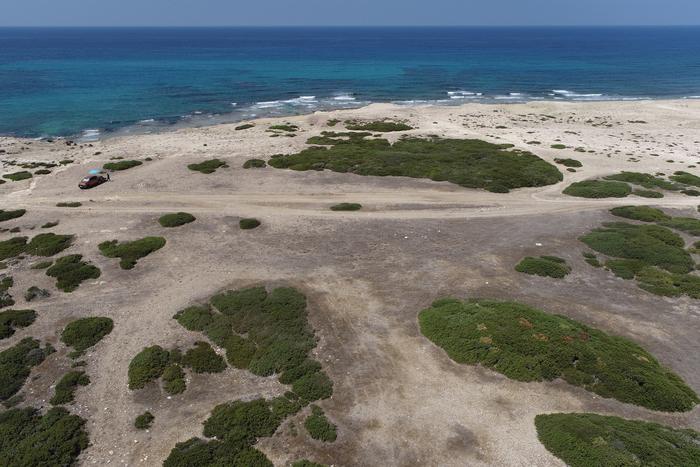The patterns of dispersal of early humans across continents and islands are hotly debated, but researchers have found that Pleistocene hunter-gatherers settled in Cyprus thousands of years earlier than previously thought.

Credit: Michalakis Christoforou.
The patterns of dispersal of early humans across continents and islands are hotly debated, but researchers have found that Pleistocene hunter-gatherers settled in Cyprus thousands of years earlier than previously thought.
In examining the timing of the first human occupation of Cyprus, research led by Flinders University’s Professor Corey Bradshaw found that large islands in the Mediterranean Sea were attractive and favourable destinations for palaeolithic peoples.
These findings refute previous studies that suggested Mediterranean islands would have been unreachable and inhospitable for Pleistocene hunter-gatherer societies.
Professor Bradshaw, with Dr Theodora Moutsiou, Dr Christian Reepmeyer and others, used archaeological data, climate estimates, and demographic modelling to reveal the early peopling of Cyprus.
Analysis of archaeological dating from the 10 oldest sites across Cyprus suggested first human occupation between 14,257 and 13,182 years ago, which is much earlier than previously thought.
The researchers say the island was then rapidly settled. Climate modelling indicated that this early peopling coincided with increases in temperature, precipitation, and environmental productivity sufficient to sustain large hunter-gatherer populations.
Based on demographic modelling, the authors suggest that large groups of hundreds to thousands of people arrived on Cyprus in two to three main migration events in less than 100 years.
“This settlement pattern implies organised planning and the use of advanced watercraft,” says Professor Bradshaw.
Within 300 years, or 11 generations, the population of Cyprus had expanded to a median of 4,000–5,000 people.
Dr Moutsiou says the results demonstrate that, rather than being inhospitable, Cyprus and perhaps other Mediterranean islands would have been attractive destinations for palaeolithic hunter-gatherer societies.
“It has been argued that human dispersal to and settlement of Cyprus and other eastern Mediterranean islands is attributed to demographic pressures on the mainland after abrupt climatic change saw coastal areas inundated by post-glacial sea-level rise, forcing farming populations to move to new areas out of necessity rather than choice,” he says.
Dr Reepmeyer adds that this interpretation came as a consequence of major gaps in the archaeological record of Cyprus, deriving from differential preservation of archaeological material, preservation biases, uncertainties associated with dating, and limited DNA evidence. “Our research, based on more archaeological evidence and advanced modelling techniques, changes that”, he says.
Professor Bradshaw says the new research results highlight a need to revisit questions of early human migration in the Mediterranean and test the validity of perceived early settlement dates in light of new technologies, field methods, and data.
The research – “Demographic models predict end-Pleistocene arrival and rapid expansion of pre-agropastoralist humans in Cyprus” by Corey Bradshaw, Christian Reepmeyer, Frédérik Saltré, Athos Agapiou, Vasiliki Kassianidou, Stella Demesticha, Zomenia Zomeni, Miltiadis Polidorou and Theodora Moutsiou – has been published in the Proceedings of the National Academy of Sciences of the USA.
Journal
Proceedings of the National Academy of Sciences
Method of Research
Computational simulation/modeling
Subject of Research
People
Article Title
Demographic models predict end-Pleistocene arrival and rapid expansion of pre-agropastoralist humans in Cyprus
Article Publication Date
16-May-2024



